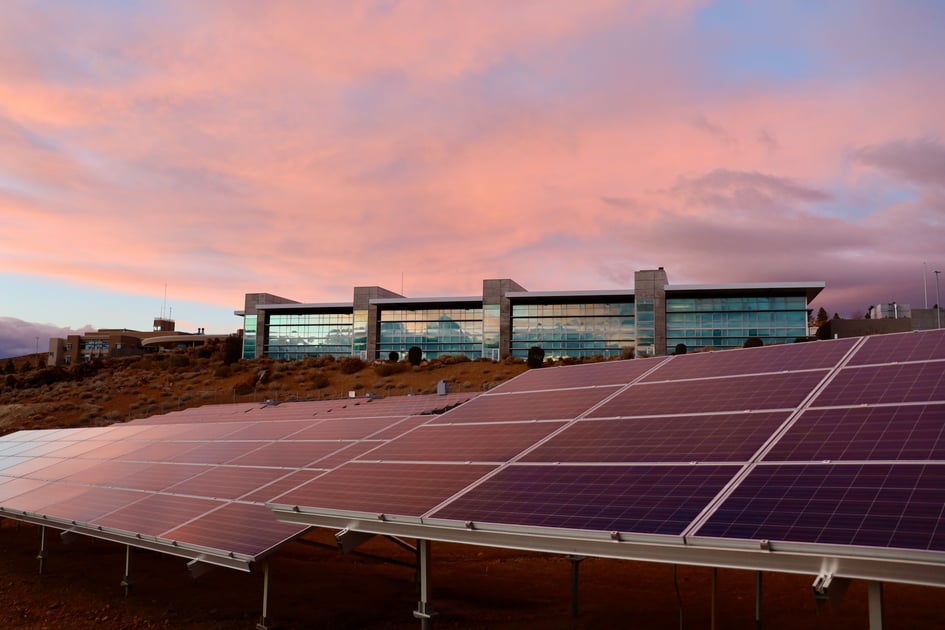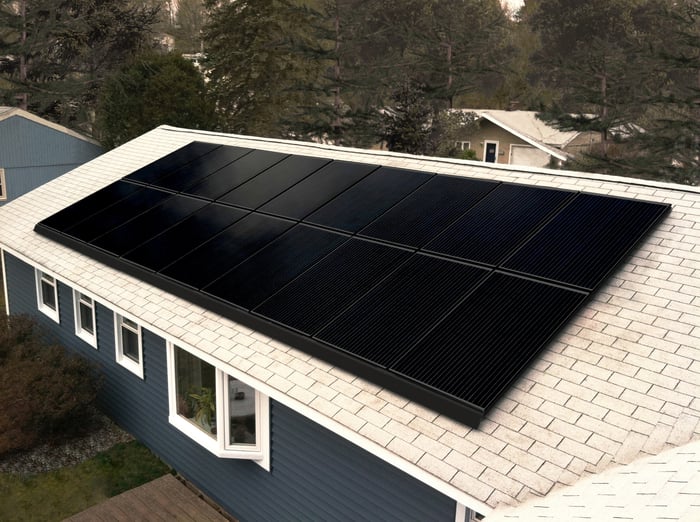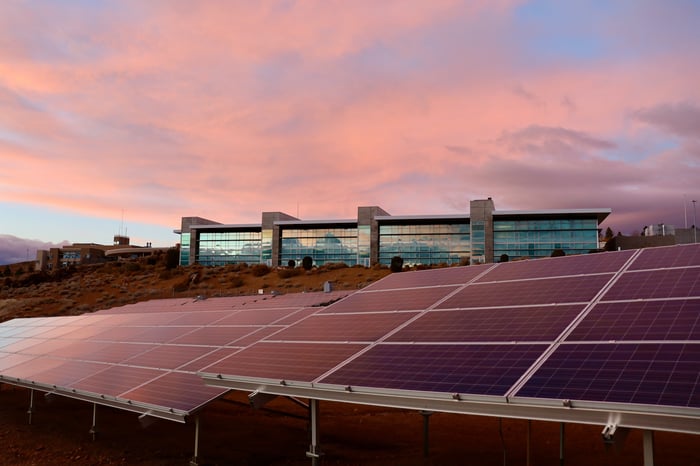Opportunities for Climate Resilience at the U.S. Department of Housing and Urban Development
June 15, 2021 •Anita Pancholy

With contributions from Josh Goldberg and Ian Feller
This article is part of a series Summit Consulting is releasing in collaboration with Grant Thornton. In this series, we discuss HUD’s role in achieving the administration’s climate resilience objectives. In each article, we unpack specific solutions HUD may leverage based on its previous track record and emerging needs, as well as how improvements to federal budgeting can enable climate resilience in housing and community development.
Historically, the U.S. Department of Housing and Urban Development (HUD) has been supportive of climate resilience objectives but has not fully integrated them into existing programs. This could change with the new administration. Increased natural-disaster recovery needs have necessitated that HUD clarify administrative actions, and through project approval, the agency has signaled a willingness to shift to guidance that advances climate resilience. For background, HUD has increasingly integrated climate resilience into its affordable housing programs over the last 15 years, from piloting “green” initiatives—such as building principles and energy efficiency—with its loan programs to pursuing value-capture approaches in mitigation through its statutory authority. In addition to setting energy efficiency as an agency priority goal back in 2010, HUD formally established an Office of Climate Resilience along with a Climate Council in 2014, the same year it updated its prior Climate Adaptation Plan to include a wide range of proposed initiatives.
As the agency continues to make necessary investments to address perennial policy issues such as housing affordability, it has an opportunity to support the current administration’s priorities, leveraging existing programs to implement climate solutions. The following are three ways that HUD might deliver on climate resilience objectives via its existing programs:
- Institutionalizing resilience in disaster relief programs;
- Reinforcing organizational best practices across lending programs to address resilience; and
- Restarting its retrofit program.
 Photo by Vivint Solar on Unsplash
Photo by Vivint Solar on Unsplash
Institutionalizing Resilience in the Community Development Block Grant Programs
HUD’s Community Development Block Grant programs—both Disaster Recovery (CDBG-DR) and Mitigation (CDBG-MIT) could be prime candidates, as accessibility to these funds and clarity in guidance has recently increased in importance. These grants were historically framed as funds of last resort after Federal Emergency Management Agency (FEMA) funds. However, from 2010 to 2018, total U.S. damage costs have surpassed FEMA Hazard Mitigation Grant funding as billion-dollar weather and climate disasters became more frequent, according to a Government Accountability Office analysis of FEMA data.
Traditionally, CDBG-DR funds have been awarded for recovery efforts explicitly connected to specific disasters. Conversely, CDBG-MIT dollars are primarily used in hurricane-affected areas to increase resilience and reduce future losses. The eligibility criteria clearly define “mitigation” to include incentives for pre-disaster state and local government planning, yet the difference in the programs as response-driven versus mitigation-driven means qualified projects are often not accepted and operate under different standards. As funding for the program is reevaluated for adequacy, HUD could clarify its policy goals with respect to climate change through updated administrative rules that further resilience.
Additionally, as more regions in the U.S. are exposed to disaster, HUD may consider separate funding for cross-cutting climate disaster mitigation measures that are both broad and cost-effective, rather than using disaster-by-disaster appropriations. Hazard mitigation funding used for risk-reduction measures such as the implementation of current building codes, set-asides for relocation assistance, and building resilience have decreased local costs substantially. For instance, a study by the National Institute of Building Sciences found that taxpayers save an average of $6 in future disaster recovery costs for every dollar spent through mitigation grants funded by federal agencies. Expanded funding for proactive mitigation measures could effectively reduce disaster relief need in the future.
Applying Best Practices in Lending Programs to Address Resilience
Going forward, HUD is positioned to leverage best practices from its existing programs to reinforce resilience planning across its lending programs. HUD’s loan and rental assistance programs have provided financial incentives for energy efficiency since 2007, using administrative actions such as mandatory assessments and favorable financing terms for borrowers who incorporate green principles. For example, single-family home buyers can qualify for a larger mortgage amount for features like solar and wind installation. While new construction guidance and financing terms encourage cost savings, there are opportunities to incentivize climate resilience through more holistic assessments. Examples include mitigation factors for air-quality vulnerabilities and flood risks.
Additionally, HUD may consider applying programmatic changes that better reflect realized savings; particularly in the multifamily portfolio to promote rehabilitation projects and ensure tenants and property owners share in these economic benefits. While rental prices are not reflective of lower utility bills in some programs, other HUD programs allow recapitalization events to trigger rent adjustments. Notably, HUD’s Rental Assistance Demonstration program leverages private capital—and in some cases, tax credits—to encourage modernization. Rents are adjusted if the property undergoes conversion to a project-based rental assistance program that included a retrofit. Renters of multifamily homes typically pay a higher percentage of their income for energy, meaning that increasing energy efficiency can improve the stability of vulnerable households. Aligning incentives across HUD’s stakeholders in a manner that delivers on economic interests would increase the appetite for rehabilitation and deliver indirectly on resilience measures.
 Photo by Manny Becerra on Unsplash
Photo by Manny Becerra on Unsplash
Restarting the Retrofit Program
The Biden administration’s American Rescue Plan increases funding to retrofit programs to address the risks that the affordable housing stock faces from environmental threats. In addition to the plan’s $40 billion dedicated to addressing public housing’s backlog in maintenance—including hazard mitigation and the rising operating costs of heating and cooling—HUD could deploy $800 million in new investments to scale the retrofit effort across its portfolio, efficiently addressing hundreds of thousands of units.
HUD’s 2009 retrofit initiative, the Green Retrofit Program, was delivered largely through direct loans and grants. Interagency partnerships, particularly with the Departments of Energy, Agriculture, and Health and Human Services, can make these efforts more effective, as information sharing across agencies could optimize federal investments. Finally, market-driven approaches, such as seeding retrofit financing through insured loans or extending tax credits through state platforms, may induce volume in the retrofit market at a time when housing security has been strongly linked to improved health.
In summary, HUD has an opportunity to launch impactful climate resilience efforts by leveraging the momentum of existing programs. With relatively minor adjustments to these programs, HUD can support the administration’s goals with less ramp-up time than new programs. In future posts in this series, we will unpack some of the specific challenges and opportunities for implementation.
Get Updates
Featured Articles
Categories
- affordable housing (12)
- agile (3)
- AI (4)
- budget (3)
- change management (1)
- climate resilience (5)
- cloud computing (2)
- company announcements (15)
- consumer protection (3)
- COVID-19 (7)
- data analytics (82)
- data science (1)
- executive branch (4)
- fair lending (13)
- federal credit (36)
- federal finance (7)
- federal loans (7)
- federal register (2)
- financial institutions (1)
- Form 5500 (5)
- grants (1)
- healthcare (17)
- impact investing (12)
- infrastructure (13)
- LIBOR (4)
- litigation (8)
- machine learning (2)
- mechanical turk (3)
- mission-oriented finance (7)
- modeling (9)
- mortgage finance (10)
- office culture (26)
- opioid crisis (5)
- Opportunity Finance Network (4)
- opportunity zones (12)
- partnership (15)
- pay equity (5)
- predictive analytics (15)
- press coverage (3)
- program and business modernization (7)
- program evaluation (29)
- racial and social justice (8)
- real estate (2)
- risk management (10)
- rural communities (9)
- series - loan monitoring and AI (4)
- series - transforming federal lending (3)
- strength in numbers series (9)
- summer interns (7)
- taxes (7)
- thought leadership (4)
- white paper (15)


